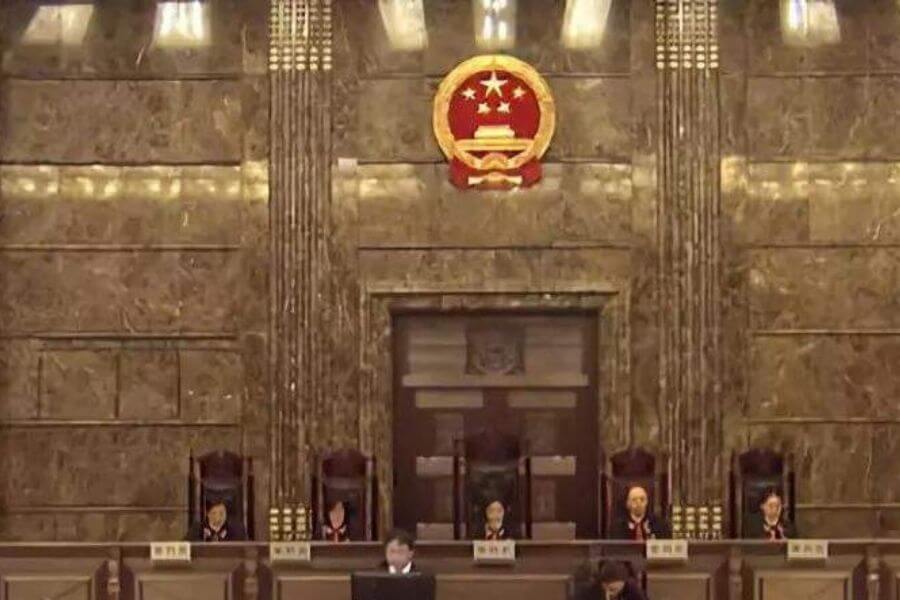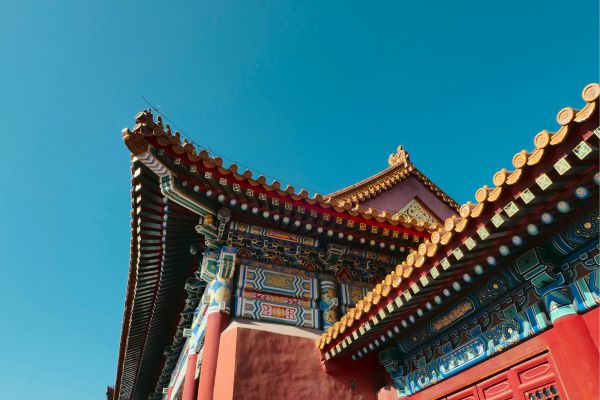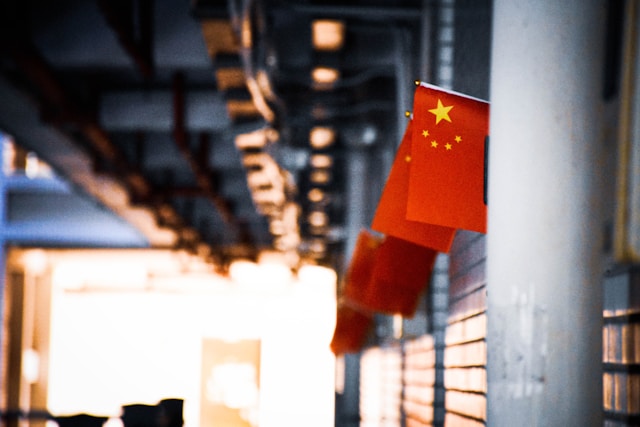
The Supreme People's Court (SPC) of China has implemented many reform measures in the third-round judicial reform, which deeply affects the current operating mechanisms of Chinese courts. Therefore, if you want to know how Chinese courts work, you must understand what the SPC did in the third-round judicial reform.
China has carried out three rounds of judicial reform. The first two rounds of judicial reform began in 2004 and 2008 respectively, the reform measures of which were mainly driven and implemented by the SPC and other judicial organs.
The third-round judicial reform lasted from early 2014 to September 2017. This judicial reform was directly under the leadership of the Central Committee of the Communist Party of China (CCCPC) and involved all Chinese judicial organs (including the courts) and legal professions.
In November 2017, Justice Zhou Qiang (周强), President of the SPC, summarized the various measures of the third-round judicial reform (“this reform”) in the “Report of the SPC on the Comprehensive Deepening of Judicial Reform by the People's Court” (最高人民法院关于人民法院全面深化司法改革情况的报告). From Justice Zhou Qiang’s report, We can observe the reform of Chinese courts with a series of measures, ranging from (1) the establishment of judicial accountability system, (2) the strengthening of human rights protection in criminal proceedings, (3) the adjustment of the court system, to (4) the response to social public opinion, (5) the resolution of the enforcement dilemma of court judgments, (6) the expansion of the court's open justice, (7) the development of the court's informationization and intelligence.
I. The Establishment of Judicial Accountability System
Establishing a judicial accountability system is the core of the third-round judicial reform. The judicial accountability system means that “he who has tried the case shall decide the case, and he who makes the judgment shall be held accountable” (让审理者裁判,由裁判者负责).
Prior to this, Chinese judges may be interfered by other people when they hear the case, and those who instruct the judge to make a judgment usually do not have to bear responsibility for the judgment.
Specifically, the judicial accountability system includes:
1. Quotas of judges
The SPC established the Judge Quota System in this reform. The Judge Quota System aims to divide court personnel into three categories: judges, trial assistants and judicial administrative personnel, and to fix the number of judges. Correspondingly, only the person qualified as a judge is allowed to hear the case and shall hear the case.
The said system is designed to remove the judge qualification of two categories of personnel from the original judge group: those who do not engage in case trials; those who engage in case trials but do not have the competency to hear cases.
The SPC organized courts across China to screen from their court staff, and selected 120,138 judges from the original 21,1990 judges to retain their qualifications as judges.
2. Judge’s Lifetime Responsibility for Case Quality
The SPC requires that judges be held accountable for life for the quality of cases they have handled. (i.e., the lifetime responsibility system). To this end, the SPC has established the judicial disciplinary committees in each province, which shall determine the judges’ misconducts during trial work.
3. Judge’s Independence during the Trial
The SPC requires judges to hear cases and make judgments independently.
Inside the Chinese courts is a hierarchical structure, and court personnel are divided into different levels. Prior to this, the judge at a higher level has the power to review the judgment to be made by the lower-lever judge and to decide whether to approve the issuance of the said judgment. The SPC canceled this judgment issuance system.
4. Alternative Supervision Mechanisms
After the cancellation of the judgment issuance system, the SPC established a number of other alternative supervision mechanisms to ensure that the quality of case handling is not degraded.
For example, the SPC has established an information system that connects courts at all levels nationwide. This system allows each node of the hearing process to be recorded simultaneously during the trial, which puts the trial activities by each judge in each court under supervision.
5. Improvement of the Judge’s Welfare
In order to motivate judges, the SPC established a new promotion mechanism for judges and increased the salary income of judges.
6. Human Resources, Property and Funding Systems of Local Courts
The SPC requires that the human resources, property and funds of the courts at the intermediate and primary levels be managed by the high people's court of the province in which they are located.
Prior to this, the human resources, property and funds of the local courts were subject to local government, which led to the impossibility of local courts to be independent from the local government.
II. The Strengthening of Human Rights Protection in Criminal Proceedings
1. Correction and Prevention of Erroneous Criminal Judgments
The SPC organized local courts to correct 37 criminal cases of wrongful or unjust conviction that had significant influence throughout the country, involving 61 defendants.
The SPC also puts more emphasis on the principle of presumption of innocence. From 2013 to September 2017, Chinese courts declared a total of 4032 accused innocent. Prior to this, Chinese courts did not insist on this principle, which resulted in some cases of wrongful or unjust conviction.
2. Substantiation of the Trial
The SPC requires that the presentation of evidence, the fact-finding of the case, the arguments between the prosecution and the defense, and the formation of the judgment shall be conducted before the court.
Prior to this, in many cases, the judge’s review of the evidence, the fact-finding of the case, and the hearing of the arguments between the prosecution and the defense were conducted prior to the trial; or conducted after the trial by the judge through the examination of case files. In addition, quite a few judgments were not made independently by the judges who participated in the trial, but were made under the instruction of the superiors .
3. Exclusion of Illegally Obtained Evidence
The SPC cooperates with the Ministry of Public Security (in charge of the criminal investigations across the country) and the Supreme People's Procuratorate (in charge of criminal prosecutions across the country), and jointly requires that the right against self-incrimination must be upheld, and illegally obtained evidence should be reviewed and excluded.
Prior to this, the Chinese judicial organs did not emphasize the exclusion of illegally obtained evidence.
4. Leniency towards Confession
The SPC demands that defendants who plead guilty and/or accept punishment, especially those who commit minor offences, first-time crimes and occasional crimes, will be treated in a lenient, summary and speedy manner.
Prior to this, Chinese courts did not adhere to this principle in practice, which led to inefficient criminal procedures.
III. The Adjustment of the Court System
1. Establishment of the SPC’s Circuit Courts
The SPC has established six circuit courts in Shenzhen, Shenyang, Nanjing, Zhengzhou, Chongqing and Xi'an. Prior to this, the SPC did not have any circuit courts.
The SPC established circuit courts in order to, firstly make close supervision of the local courts, secondly reduce the litigation cost of the parties for trial at the SPC, and thirdly disperse the total caseload at the SPC headquarter.
2. Establishment of Courts Across Administrative Divisions
The SPC attempts to establish courts across administrative divisions.
Prior to this, a local court was established in each administrative division in China. Because of the close integration between local courts and administrative divisions, local courts are often involved in the interests of local authorities and local networks of influence.
The SPC hopes that courts across administrative divisions will be more independent, and for this purpose, such courts are authorized to hear certain cases that may involve local interests and local protection, such as administrative litigation cases, environmental protection cases, food and drug safety cases, and major civil and commercial cases.
3. Establishment of the Intellectual Property Courts
Given that IP cases are usually more professional and complex, the SPC hopes that IP cases will be subject to a centralized jurisdiction of specialized courts. To this end, intellectual property courts are established in Beijing, Shanghai and Guangzhou respectively. The SPC hopes to strengthen the protection of intellectual property rights through the establishment of intellectual property courts.
4. Adjustment to Internal Departments of Courts
The courts at all levels in China have established a large number of departments within them, but many of them are not involved in case trials, which have made the courts more bureaucratic. The SPC hopes that the courts across the country will adjust the internal departments to substantially slash unnecessary departments.
IV. The Response to Public Opinion
1. Establishment of the Registration System for Case Docket
As of 1 May 2015, all courts in China will adopt the Registration System for Case Docket, that is, an application for filing a case that meets the conditions for litigation should be registered on the spot.
Prior to this, Chinese courts often refused to accept applications for case docket from the parties in an informal manner. The main reasons for this practice include: in order to protect certain parties from becoming the accused, or simply to reduce the workload of the court.
However, the Registration System for Case Docket has led to a sudden “litigation explosion” in Chinese courts, which has also become a new dilemma that the SPC is trying to solve.
2. Strengthening of the Alternative Dispute Resolution and the Case Distribution
In order to solve the "litigation explosion" caused by the Registration System for Case Docket, the SPC firstly encourages the parties concerned to solve disputes by mediation and arbitration; secondly, the SPC requires a faster trial procedure for cases involving small amounts.
In addition, local courts are also trying to use a streamlined, modular approach to accelerate the trial.
3. Reform of the People's Assessors System
The SPC attempts to expand the range of candidates for the people's assessors (jurors), to increase the number of cases for the people's assessors to hear, and to ensure that the people's assessors are essentially involved in the trial activities.
Unlike jurors in other countries, Chinese people's assessors form a collegial panel jointly with judges, and they enjoy the same powers as judges.
V. The Resolution of the Enforcement Dilemma of Court Judgments
1. Optimization of the Internal Enforcement Agency of the Court
The SPC instructs local courts to form, in addition to the existing Enforcement Department, an Enforcement Tribunal, which is responsible for reviewing substantive disputes occurred during the enforcement, such as the objection raised by the judgment debtor against the enforcement activities of the court. Prior to this, enforcement activities were not adequately supervised as the enforcement personnel handled objections on their own.
The SPC has also established an enforcement process management system based on its information system, enabling the SPC to supervise and manage the enforcement activities of all courts throughout the country.
2. Establishment of the Property Investigation and Control System
The SPC has established partnerships with more than a dozen government departments to enable the enforcement personnel of the court to easily access all property of the judgment debtor through the information system.
3. Establishment of the Online Judicial Auction System
The SPC requires that if the property of the judgment debtor needs to be sold, the property should be publicly auctioned online.
Prior to this, the said property was commissioned to auction companies for auction by the enforcement personnel of the court. There have been many corruptions in such auction.
4. Establishment of the Disciplinary Network for Dishonest Judgment Debtors
The SPC has established a credit disciplinary network for dishonest judgment debtors jointly with more than 60 government departments and enterprises. Through the network, the SPC publicly discloses information about the dishonest judgment debtors and makes their behaviors restricted in various fields.
VI. The Expansion of the Court’s Open Justice
1. Establishment of Four Platforms for Open Justice
Based on its information system, the SPC established the China Judicial Process Information Online (http://splcgk.court.gov.cn/), the China Trials Online (http://tingshen.court.gov.cn/), and the China Judgments Online (http://wenshu.court.gov.cn/) and the China Enforcement Information Online (http://zxgk.court.gov.cn/).
Through these four platforms, the SPC hopes to protect the parties' right to know, to make the courts subject to public supervision, and to procure judges to improve their competency.
2. Increasing Access to Open Justice
The SPC provides judicial information and judicial services to society through social media, websites, and mobile device apps, etc..
The SPC also held many international conferences (such as the China-ASEAN Justice Forum, the BRICS Justices Forum, etc.) to show its open justice to the international community.
VII. The Development of the Court’s Informationization and Intelligence
1. Application of Judicial Big Data
The SPC connects all 3,523 courts and 9,277 dispatched tribunals across the country to its information network. In this network, relevant information of various courts and judges is recorded and updated in real time. Correspondingly, each court can conduct real-time analysis and statistics on relevant information of itself and lower-level courts, and make decisions based on statistics and analysis results.
2. Application of Artificial Intelligence
The SPC and some local courts have developed a number of intelligent assistant systems based on information systems and big data. These systems can push similar cases to judges, correct clerical errors, transcript court recordings into text, and more.
3. Application of Online Litigation Services
The SPC promotes local courts to conduct online case docket, online payment, online cross-examination, online trial, online service by the Internet, and hopes to establish an online dispute resolution platform.
4. Establishment of Hangzhou Internet Court
In August 2017, the first Internet court in China, the Hangzhou Internet Court (http://www.netcourt.gov.cn/) was established in Hangzhou. Hangzhou is the place where the headquarter of Alibaba, China's largest e-commerce company, is located. Alibaba is involved in an extremely large number of e-commerce disputes every year, so as early as 2015, there have been e-commerce online courts in Hangzhou.
The Hangzhou Internet Court is mainly in charge of all first-instance cases involving Internet under the jurisdiction of the primary people’s courts in Hangzhou.
The SPC hopes to explore litigation rules related to Internet cases based on the experience accumulated by the Hangzhou Internet Court. For example, the Hangzhou Internet Court tries to allow parties in different places to participate in trials through online video without having to appear in court personally. The court even tries to get parties in different countries to participate in asynchronous online trials to solve the problem that the time difference makes it difficult for the parties to be online simultaneously.
If you would like to discuss with us about the post, or share your views and suggestions, please contact Ms. Meng Yu (meng.yu@chinajusticeobserver.com ).
If you wish to receive news and gain deep insights on Chinese judicial system, please feel free to subscribe to our newsletters (subscribe.chinajusticeobserver.com ).
Contributors: Guodong Du 杜国栋 , Meng Yu 余萌






